Posts Tagged ‘Farm Girl’
Shards of Golden Light
I wrote this post over a year ago, but it still holds true today; we gather and store burned down remnants of candles all year long, and we turn them into new candles in the fall. The box we store the bits and pieces in may be larger than when we first started, and the collection of fire safe containers has definitely grown, but the process of making light for winter remains the same–melt, pour, set, light.
I love the glow of candle light. It casts a warm comfortable feeling over the entire room. From the first hint of fall’s chill until buds burst in the warm spring air there are candles burning in my little farmhouse.
They are on my mantel, set in a collection of thrift store candle holders on my hearth, on the window sill of my kitchen, in my bedroom and even along side my bath tub. It’s amazing how much that little flickering flame of light can calm and restore and bring peace at the end of a busy day.
But, what once was a necessity for lighting a room, reading a newspaper, or illuminating a path has become almost a luxury. Years ago I could buy candles for a few dollars, but now they cost more than I spend on a bag of chicken feed. Being the frugal farmer that I am however, I have found a few tricks to keep my love affair with candles without breaking the bank.
One is to use the department store gift cards I receive in the mail. You know the ones I’m talking about…where they give you $10 off of a purchase to entice you into the store, hoping you’ll spend more. I’m too savvy for their ploys, though. I am usually able to find 3” pillars, or jarred candles or 6 votives for just under the minimum $10 (which I am still able to use my card to purchase). More times than not I walk out of the store with beautiful scented candles for no money at all. How’s that for farm girl frugality?
My second method to keeping the candle flames flickering is to save all the little bits and pieces of burned down candle wax. I keep them in a ziplock bag. When I have gathered enough pieces of the same color (or similar color) I melt them down to make new candles. I save all the old jars from any jarred candles because they are made of tempered glass and safe for pouring hot wax into.
For just a few dollars in a package of wick and a $2.00 pot I bought at the thrift store I can make a new candle in less than 30-minutes and enjoy the glow of my recycled wax for hours. How great is that!
To make your own candles out of bits and pieces all you need is a stainless steel pot (one you don’t mind getting covered with wax), a larger pot, an old jarred candle jar and a package of wicks.
Now—fill the larger pot half way with water and set it on a medium flame. Cut the wick 1-inch taller than the jar, tie a knot at one end, wrap it around a pencil or chop stick a few times so it sets nicely on the bottom of the jar.
Place the wax bits in the smaller pot and set it inside the larger pot–like a double boiler. Let the wax melt, stirring occasionally at first, then constantly as the wax gets hotter. When all the wax has melted, gently pour it into the prepared jar. (if your wax has bits of wick or debris in it, pour it through a small hand-held sieve). Let it set overnight. When you’re ready to burn the new candle, cut the wick to 1/2-inch and light it.
Voila! That’s all it takes to keep the candle glow burning all the way through to spring.
The ABC’s of a Homesteading Life

Apples hang low on branches that bend to the ground. Picking time is just around the corner. There’ll be cold crunchy crispness for fresh eating, sliced sweetness in pies and tarts, savory baked apples and “just past prime” apples cooked down and made into an applesauce that is perfect with a succulent roast pork.
Bread rises in the warmth of a kitchen then is pulled hot and fresh from the oven on a holiday morning, smothered in butter or honey or a homemade summer jam. It’s heady aroma filling a quite farmhouse.
Chicks pip and crack, making their way, wet and weak, from the warmth of their eggshell cocoon. They grow plump and fat, peck and scratch the ground, finding bugs and worms while growing into stately layers or succulent roasted dinners.
Daydreams. A cool, late summer evening to celebrate the past and dream of the future; to praise protectors that make it possible for a single mom and a child to live a farm life, at the edge of suburbia with the help of a few good friends, a pen full of lambs and a coop full of chickens.
Eggs hidden in corners and behind bales of hay like small nuggets of buried treasure, waiting to be collected or hatched to replenish an aging flock, or cooked into a hearty breakfast fit for a farm girl.
Fruit trees spread their branches, pushing their blossoms out to become a new year’s crop blushed by the sun and ripened in the heat of summer.
Gardens grow rich and green; tangle and twine through their beds before producing brightly shaped crops perfect for eating fresh, freezing or canning.
Hands dive deep into rich black soil, making way for a fall sowing of seeds. Pulling spent crops, moving manure from coop to compost and from compost to bed.
Imaginations wander, thoughts emerge, ideas form and a town lot slowly transforms into a productive oasis of food and fiber; simplicity and self-reliance.
Jam bubbles and sputters on a red hot stove; releasing its summer juices for a concoction that will remind us of warmer weather on a cloudy winter’s day.
Killing goes hand-in-hand with the raising and growing, providing the family with safe, wholesome food for the year. Prayers go up from grateful hearts for an animal’s good life, which sustains ours.
Lambs jump and frolic, getting strong and fat on good feed. Their fate…to some a cold death, to others a year’s worth of dinners wrapped in paper and stacked in a freezer.
Mason jars line the shelves, gleaming with our brightly colored harvest; enough to feed a family all winter long.
Night time falls silently over our little farm, quietly relinquishing its hard working inhabitants to sleep.
Owls hoot from high in the trees, swooping down to earth anytime a mouse scurries across its path.
Pumpkins gleam in the dusky autumn sun, waiting to transform our farmhouse into a fantasy of fall splendor before being turned into pies and butters and breads and cakes.
Quilts lay out like rainbows over the horizon; pieced together from scraps of fabric or worn out favorites to keep a family warm from the harsh winds of winter.
Rain storms roll through the valley, coming down in sprinkles and showers; downpours and droves, nourishing the parched spoil, renewing life on our little farm.
Season’s change; from the long sunny days of summer filled with fresh eating from the garden to the cool crisp days of fall and harvests put up for winter store to the promise of spring with the turning of soil and the planting of seeds.
Time chases us as we plan and work and move toward a more self-sufficient life, building and planting to live self contained. But, time is also our friend, for life is about the journey and not the destination.
Understanding comes from days working the soil or tending the animals. Old worries, past ambitions, long held desires fade into the distance as new truths take hold and become part of who we are becoming.
Victories abound on our little farm; barns are raised, skills are learned, chicks are hatched, kits are born, lambs grow, gardens produce and animals give their lives to feed a grateful family.
Wash hangs on the line, blowing in the soft breeze, taking in the sweet scent of a contented farm.
X-altation from a life lived simply brings contentment and comfort.
Yarn spun from a harvest of wool; washed and carded and put on a wheel, wraps around clicking needles or flies through the strings of a loom; emerging as hat or scarf or sweater, bringing warmth and comfort to the wearer.
Zucchini’s flourish in compost rich beds; dark green and golden yellow even striped become the base for breads or cookies or muffins; sliced or sautéed or stuffed and baked. They become the center of our meals.
We have come a long way since the first spade plunged deep into the soil; the first animal walked our land. We have much still to learn, but we produce our own crops and raise our own meat. That’s enough.
For now.
Frosty Mornings and Milk Jug Cloches
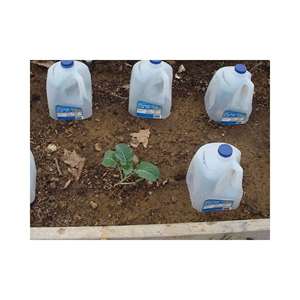 Two week out from our celebrated Spring Equinox, that day when we turn our backs on a long cold winter and look forward to the warming rays of spring, we have seen some of the coldest temps this season, along with our traditional spring norms in the 60s and 70s. Every morning when I get up I can see frost on neighboring rooftops, on lawns and on cars.
Two week out from our celebrated Spring Equinox, that day when we turn our backs on a long cold winter and look forward to the warming rays of spring, we have seen some of the coldest temps this season, along with our traditional spring norms in the 60s and 70s. Every morning when I get up I can see frost on neighboring rooftops, on lawns and on cars.
Traditionally our last frost date is March 15th and I normally try to direct sow root veggies the first weekend in March. It is also the time when I start a ton of other veggies for transplant later in the spring. With my garden just a few weeks under ground and the nightly lows in the 30s and 40s this usually stoic farm girl is quaking in her muck boots like an expectant mother. Was I too anxious to start gardening? Did I foolishly jump the gun? Perhaps. But, if I had not planted when I did I would not have had another opportunity until the first week in April; much too late to see a harvest of greens and early roots by Easter.
The seeds are in though and the only thing to do now is deal with what Mother Nature throws our way.
The remedy…crop covers; sometimes called cloches, which is French and sounds really cool.
Crop covers can be purchased or homemade. Purchased crop covers are sheets of semi-transparent clothe that can be placed over a garden bed, attached to the top of wire fencing or staked over flats of planted seedlings. It acts like a mini-greenhouse, trapping the warm sun of day and maintaining it throughout the night. A few degrees increase in temperature can mean the difference between garden survival and complete disaster.
In a pinch, even opaque containers can save your plants. However, if a hard freeze is on its way, cover plants as best you can and cross your fingers.
Scavenged or re-purposed materials like plastic sheeting or clear drop clothes can be used for larger outdoor beds. If you have a smaller garden area or a balcony or pot garden there are literally a zillion things you can use to protect your plants. Containers like clear soup tubs from take-out restaurants, deli containers, old refrigerator containers, and milk or juice jugs make great substitutes. Even glass jars that hold those massive amounts of food items from big box stores can be used, and are the most like a French cloche.
It doesn’t get any easier than washing out a container, removing the label to allow more light in and placing it upside down over your sprout. Give it a few twists into the soil to anchor it well then weigh it down with something heavy so it won’t blow over in the wind. If you’re area is prone to marauding critters, weigh it down with something heavier.
Milk cartons and juice jugs make great cloches for larger taller plants like tomatoes, cabbage and broccoli. Simply wash, remove the labels and cut off the bottom. Set it over your plant and push into the soil. The nice part about the jug system and the thing I like the most is that you can either drill a few holes in the lid or remove it all together (during the warm part of the day) so the inside doesn’t get too hot. Another benefit about the jugs is the 2-for-1 deal you get by cutting them in half across the middle, horizontally or down the middle, vertically. These work well for bushy shorter plants or lay it on its side over short rows of smaller plants.
Obviously glass containers can’t be cut in half and used in multiple ways, but they are the most like a traditional French cloche, which is a bell-shaped glass cover used to protect plants from frost, wind and rain. Plus, when stored in the off season they will last for a long time.
There are many different materials you can use, but the most important point is the container must be, at least, semi-transparent to let in the sun and its warmth. Also remember that protecting your plants is a day-by-day strategy. Covers should not be left on for days on end or the lack of sunlight (and over heating) will affect their growth.
Also remember that on warmer days, no covers are necessary. In fact, covering your plants during warm days can build up the heat inside, literally cooking your plants to death.
With a few recycled and homemade (or purchased) crop covers on hand you can protect your garden from harsh early spring weather.
Marching on little seedlings, March on!!
The Storm that Never Came
The storm that was supposed to arrive last night never materialized. It skirted us and headed south; a sad turn to be sure. Our rainfall this season has barely reached 6 inches and with our wet season almost over this can only mean one thing…we’ll be watering sooner and more often than usual this spring and summer.
Not music to my ears, I can tell you. Our water rates have already gone up 5 times in the last year and another rate hike is slated to begin next month. This coupled with an increase in property taxes, medical insurance premiums and of course gas prices have this farm girl looking down at a pretty thin pocket book. All will turn out well I know. It always does. Anytime I’ve needed answers, they come to me when and how they are suppose to.
But, I won’t just be sitting around waiting for Manna from Heaven though; we’ll hunker down, pair down and keep an eye on our spending until we weather the storm. But, I have to say, I’d rather be weathering a rain storm instead.
An early spring means getting seeds into the garden sooner which is happy news. Brianne and I are picking up a load of free composted manure on Friday. It will fill the new raised vegetable beds. Hard work shoveling and a morning in the sun is a small price to pay for rich soil and an early harvest of lettuce greens, beets, carrots, radishes and spinach. I’ll plant early maturing crops first, and if time permits, I’ll start cabbage, broccoli and cauliflower in 4 inch pots. The tomatoes I planted last month are almost 3 inches tall now. In another few weeks they’ll be transplanted into larger pots until they are big enough and strong enough to withstand being planted in the garden.
Our rainless day was cold and blustery with winds that howled and cold that seemed to blow right through you. We spent the day at home with a warm fire and a pot of soup bubbling on the stove. There’s no better smell to fill a warm house then that of a hearty soup simmering away; except maybe for bread baking. On days like these I feel like cooking more than usual. There’s just something about being in the kitchen, creating, cooking, feeding a family. I thumbed through my notebook of collected recipes, rumpled from use and splashed from exuberant cooking sessions, and found one I haven’t made in a long time. Read the rest of the story »
National Heirloom Expo
I was so disappointed when I found out that the California Mother Earth News Fair had been cancelled. According to MEN staff, there wasn’t enough interest in the fair to continue with its planning. I question that. I think California is in dire need of informative workshops and festivals on sustainable farming/gardening, self-sufficient and self-reliant living, and living a more simple less consumer intensive lifestyle.
I mourned the loss of a few days spent with like-minded people that I could connect with and talk with and possibly build friendships with. But, my grief was short lived. Like a beacon in the dark. Like quenching a parched body, I found a wonderful (maybe even better) replacement – The National Heirloom Expo.
Slated for September 13, 14 & 15 at the Sonoma County Fairgrounds, this event will include not only heirloom fruits and veggies, but a heritage livestock show as well. The schedule is chock full of speakers, workshops, vendors, heirloom displays, music and art, all there to help us learn to live a more authentic fulfilling life. What more could a farm girl ask for!
I am a Farm Girl Geek
I’m a farm girl geek. I own clothing with farm themes on it. I have sheep on my sweaters and livestock on my gloves. I don’t need to be reminded that I’m a farm girl at heart. But, I like to show other “closeted” farm girls that they don’t need to be afraid to show their true selves – even in our over consumptive suburban part of the world. It causes people to pause, to strike up a conversation about their own attempts to be more self-reliant. I applaud what ever measures they have taken. And, with these simple steps and small encounters we can build a network of friends with the same goals.
So – come out of the closet folks! Wear your farm gear proudly! And, start to build a network of like-minded people in your own community.
![]() photo credit: Shovelling Son
photo credit: Shovelling Son
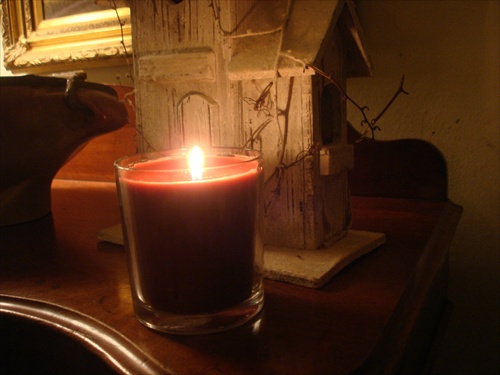
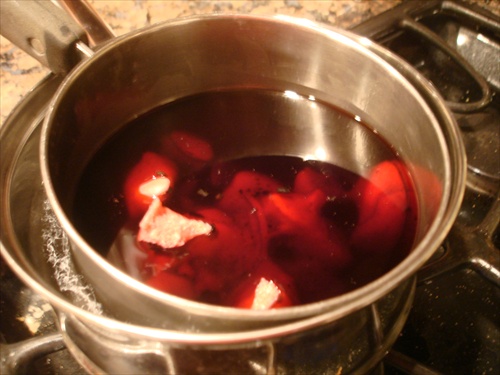
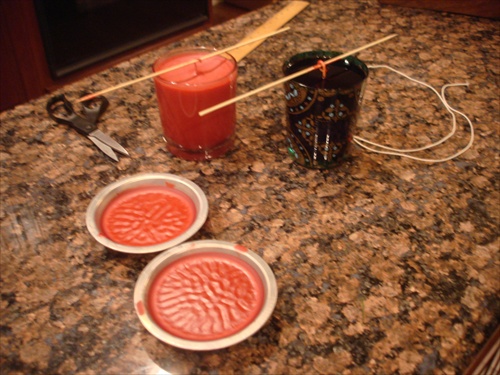
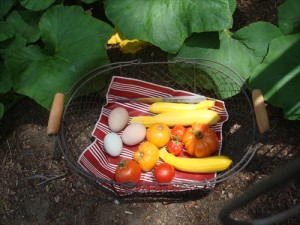
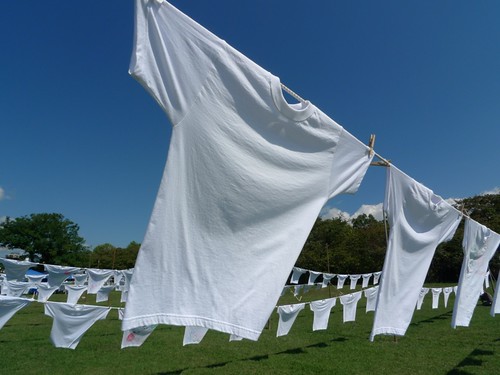


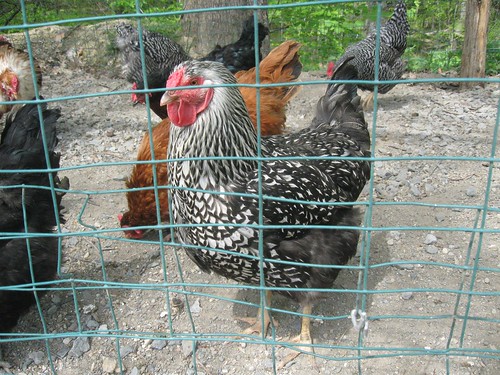
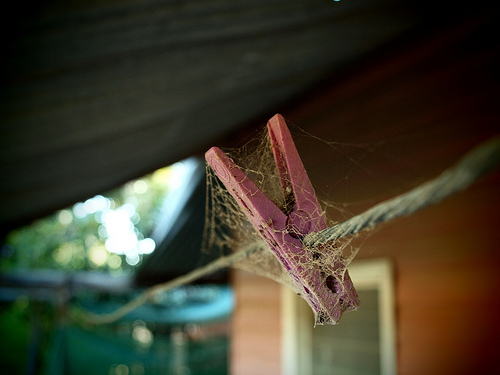
Recent comments
Aenean nonummy hendrerit mauris. Phasellus porta.